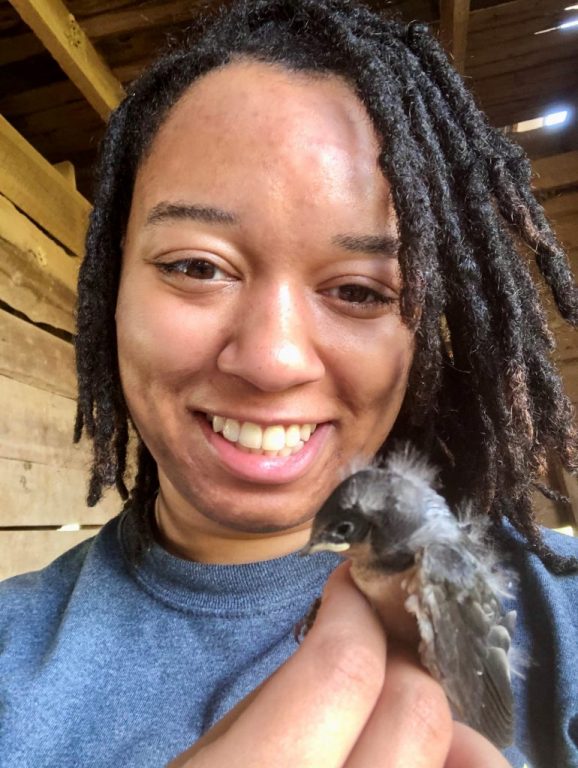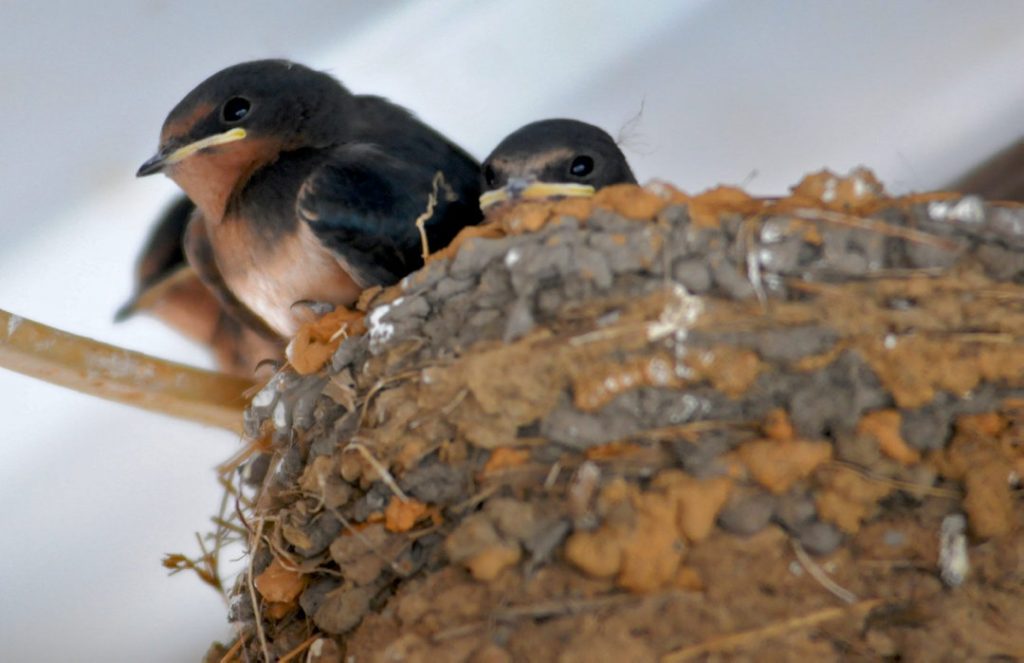BY LEAH ZERBE
Ornithologist Arthur Bent’s words in the early 1900s still hold true today.
“Everybody who notices birds at all knows, admires and loves the graceful, friendly barn swallow,” he explained. “No bird in North America is better known as a welcome companion and a useful friend to the farmer, as it courses about the barnyard in pursuit of the troublesome insects that annoy both man and beast.”
Barn swallows have a special way of capturing our hearts. And last Sunday, mine beat a little faster as I witnessed the first barn swallow of the season playfully swooping over a farm meadow.
The barn swallows were home.
Barn swallows don’t live in Schuylkill County year-round. Instead, most overwinter in South America and then make the long journey north to breed throughout most of the United States in the spring and summer months.

SUBMITTED PHOTO
Murry Burgess holds a barn swallow chick in her research barn in Snow Camp, North Carolina. She is a doctoral student in North Carolina State University’s College of Natural Resources.
Welcoming old friends home
Some of my earliest nature memories involve “mucking out” horse stalls with my aunts in our family’s barn, watching these swallows build mud nests on wooden beams and raising their chicks.
And it was always fun to watch barn swallows’ aerial acrobatics as they swooped behind tractors cutting hay, happily slurping up insects.
According to Journey North, a barn swallow can fly up to 600 miles a day, coursing back and forth to capture insects. (Yep, that includes flies, gnats and mosquitoes — up to 60 an hour, according to some estimates.)
But I wondered, do the same swallows somehow return to our farm each spring?
”Most barn swallows do return to the exact same place, and often the exact same nest they used the previous year,” said Murry Burgess, a doctoral student studying barn swallows at North Carolina State University. “They have an amazing sense of direction. On a broad scale, they will use the stars. But once closer, they do recognize landmarks and things they’ve seen before.”
Burgess studies barn swallows, specifically how artificial light impacts the health of chicks. Barn swallows make a great research species because they are present on all continents but Antarctica.
“Some of my early findings are that barn swallow chicks raised under artificial light are growing slower,” Burgess said. “It’s taking longer to feather, build up body mass and leave the nest.”
This may not sound like a big deal, but when our outdoor lights suppress birds’ melatonin, it’s tinkering with development that throws off life cycle timing. The birds may not start migration south on time, and the food they need to make it to South America may already be gone.
Barn swallows live an average of five to eight years. But our addiction to artificial lights at night could be cutting that short.
Here’s how you can help barn swallows and other birds in need:
- Rethink outdoor lighting. Turn off outdoor lights for all or part of the night. “It’s really helpful to all wildlife species — and humans,” Burgess said. If you absolutely need outdoor lighting, consider installing a motion detector.
- Check out Audubon’s Lights Out resource for more information and tips.
- Keep cats indoors. Cats are a leading killer of birds, killing an estimated 2.4 billion birds per year in the U.S. alone.
- Tell your federal representative to ban dangerous neonicotinoid insecticides linked to the drastic decline of bees, birds, bats and other insects.
- Track their return. Sign up with Journey North to contribute your first sightings of barn swallows and other species each year. This data helps contribute to community science projects.
- Support initiatives to conserve farmland and open space.
Contact the writer: leah.zerbe@gmail.com




